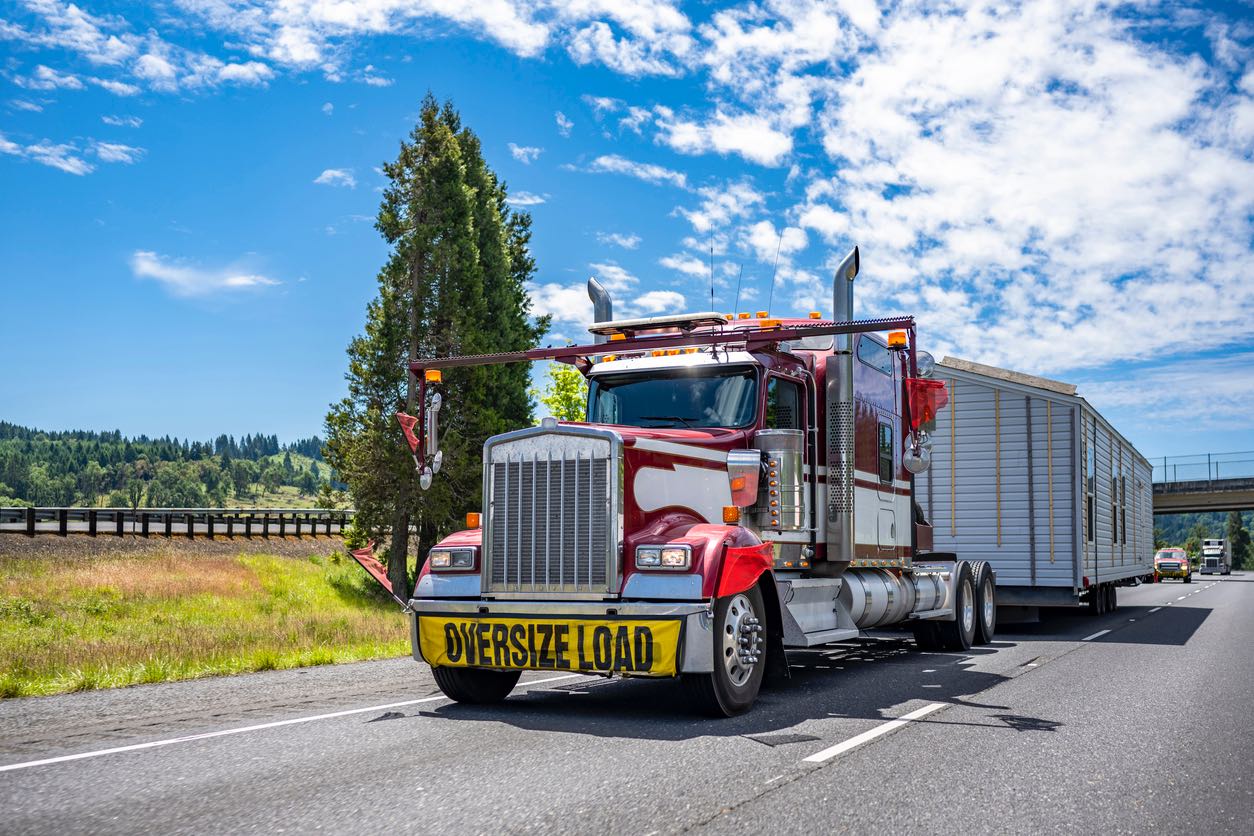In the wake of the COVID-19 pandemic, the transportation sector, an essential component of the world economy, has experienced a dramatic transformation. After experiencing an unheard-of spike in demand, this industry is currently dealing with what is becoming known as the “freight recession.” It is critical to analyze the subtleties of this downturn at this pivotal moment. We go into great detail into the causes of this transition, showing how shifts in consumer behavior, technological developments, and economic upheavals have all combined to bring in a new era for freight and logistics in the US. In addition to highlighting the current issues, this examination lays the groundwork for a discussion of creative fixes and tactics that have the potential to completely transform the transportation industry in the future.
Understanding the interactions between different factors becomes crucial as the industry makes its way through these choppy waters. Transportation is undergoing rapid change due to a number of factors, including the growth of e-commerce, changes in international trade regulations, and changes in the domestic freight industry. The goal of this blog post is to provide a thorough analysis while highlighting the need for adaptability and resilience in the current climate. Additionally, we’ll highlight how the digital transformation can help lessen the effects of the freight recession. Our goal is to give businesses and stakeholders a road map for thriving in this changing market by combining the perspectives of prominent industry figures with actual case studies. The remainder of this blog post, which places a strong emphasis on adaptability and vision, is a guide for anyone trying to make their way through the complexity of the current transportation problems while keeping an eye on long-term, sustainable growth.

The COVID-19 pandemic has had a long-lasting and significant effect on the transportation industry. This section examines how the pandemic accelerated technological advancements and e-commerce, upended established supply chains, and compelled a reassessment of logistics in light of shifting economic conditions. Comprehending these shifts is essential for maneuvering through the present “freight recession” and formulating forthcoming tactics within the transportation sector.
The Pandemic Onset: The first wave of COVID-19 ushered in a period marked by unpredictability and instability. Conventional supply chains were abruptly disrupted after operating with a steady and predictable rhythm. Nations closed their borders, businesses stopped producing goods, and consumer demand trends drastically changed. The transportation sector, which is essential to the global flow of goods, had to deal with two challenges at once: managing disrupted supply lines and quickly shifting consumer demands. The operational landscape of the industry underwent a fundamental transformation during this time, rather than merely being disrupted.
E-commerce and Technology: A change that was already happening—the growth of e-commerce—was expedited by the pandemic. People stayed at home when physical stores closed, which led to a rise in online shopping for both necessities and extras. This was not merely a passing trend; rather, it signaled a sustained shift in consumer behavior. To meet the spike in demand, the transportation industry had to quickly adapt by scaling up capacities and utilizing digital technologies. To stay up with the e-commerce boom, businesses made investments in automated warehouses, cutting-edge tracking systems, and effective last-mile delivery services. During this time, the transportation industry wasn’t just about reacting to pressing issues; it was also about taking the lead in the digital revolution.
The Return to Normalcy: ‘Normal’ has been reinterpreted as the world has transitioned to a post-pandemic reality. Although the initial surge in demand has subsided, the environment has irrevocably changed. While the frenzy of panic buying and stockpiling has died down, consumers have largely maintained their online shopping habits. The transportation sector is currently confronted with a new set of difficulties, including managing rising operating costs, adjusting to a market where growth is more nuanced and unpredictable, and navigating an increasingly intricate and linked supply chain. The transportation industry is now more technologically sophisticated as a result of the pandemic, but it still faces difficulties in an unpredictable global economy.
This stage of the development of the transportation industry is characterized by ongoing adaptation and strategic vision. Enterprises that can effectively manage operational efficiency and adaptability, utilizing technology and comprehending evolving consumer behaviors, will be well-positioned to prosper in this unique setting. The industry’s focus is shifting from the pandemic’s immediate effects to long-term sustainability and resilience in a constantly shifting global market.

This part examines two well-known case studies from the US freight recession: Convoy, a cutting-edge digital brokerage company, and Yellow Corp., a significant participant in the less-than-truckload shipping industry. These examples highlight the difficulties that businesses in the transportation sector encounter and emphasize how crucial it is to be flexible when dealing with shifting market conditions.
Yellow Corp.’s Struggle: As an example of the tremendous volatility in the transportation industry, Yellow Corp., one of the historically dominant players in the U.S. shipping market, found itself on the verge of bankruptcy. Not only did the potential demise of a major industry player threaten thousands of jobs, but it also raised concerns about the viability of large-scale freight companies given the state of the economy. The tale of Yellow Corp. is a sobering reminder that contemporary economic uncertainties and fast changes can affect even well-established businesses. Their circumstances, which have been greatly impacted by the pandemic’s aftereffects, shifting customer demands, and growing operating expenses, are indicative of a larger trend impacting other organizations in the same industry.
Convoy’s Closure: Convoy, a freight brokerage company that gained notoriety for prioritizing digitalization over traditional methods, declared its intention to end operations immediately. This closure represents a turning point for the industry and highlights the difficulties in incorporating cutting-edge technology into conventional shipping models. Convoy’s growth from a startup to a major player in the industry and its eventual demise serve as a reminder of the careful balancing act needed to successfully use technology while preserving vital human connections in business operations. The company’s struggles and ultimate demise teach us important lessons about the opportunities and risks of taking a tech-centric approach in a field that has traditionally relied on human relationships and expertise.
Insights from Eric Masotti: Prominent logistics expert Eric Masotti offers insightful commentary on how technology and interpersonal communication coexist in the sector. Masotti has direct experience with the changing dynamics of a digital brokerage in his role as President of Logistics at Trailer Bridge. He supports an approach that puts an emphasis on interpersonal connections and teamwork in addition to technology improvements. Masotti claims that undervaluing the importance of the human element in logistics contributed to Convoy’s demise. His viewpoint emphasizes the need for a well-rounded strategy that builds solid, enduring relationships within the industry while utilizing technology to maximize efficiency.
All things considered, the transportation industry can learn a great deal from these case studies of Yellow Corp. and Convoy. In navigating the complexities of the current freight recession, they emphasize the value of human relationships, financial stability, and adaptability to technological innovations. The examples provided offer industry participants with a road map for modifying their tactics in response to the changing needs of the market and state of technology.

For the transportation sector, the current freight recession in the United States offers a wide range of opportunities and complex challenges. In addition to identifying issues, this phase involves coming up with creative solutions that can increase the sector’s resilience. As consumer behaviors, market dynamics, and economic uncertainties change, now is the moment for stakeholders to change and adapt.
Moving Past Blame Games to Find Resilience-Building Solutions: Leaders in the industry are now concentrating on developing solutions rather than analyzing the reasons behind the freight recession. This proactive strategy entails spotting flaws in current models and coming up with new ideas to build stronger systems. This is a time for reflection and action, with the aim of creating an industry that is future-proof and able to withstand similar difficulties.
A New Normal for Consumer Behavior and Supply Chain Adaptation: Consumer behavior has drastically changed in the post-pandemic environment, resulting in shifts in demand patterns and logistical difficulties. In addition to increasing the amount of goods being transported, the growth of e-commerce has altered the nature of these goods and delivery schedule expectations. To remain relevant and effective in this new normal, businesses need to embrace digital transformation, reassess their supply chain strategies, and invest in flexible logistics solutions.
Growing Expenses and Economic Uncertainties is an Argument for Strategic Reassessment: Additional economic factors that worsen the freight recession include global economic slowdown, fuel price fluctuations, and inflation. These factors force a strategic reevaluation of business models by driving up operating costs and shrinking margins. To lessen these financial pressures, businesses should look into low-cost options, streamline their routes, and perhaps even expand the range of services they provide.
Innovation in Technology is the Secret to Overcoming Difficulties: When it comes to solving the problems caused by the freight recession, technology is essential. Automation, AI-driven logistics management, and advanced analytics can all be used to increase productivity, cut expenses, and boost satisfaction among clients. Accepting technological innovation is becoming more than just a fad—it’s essential for thriving in this quickly changing environment.
Partnership and Cooperation is Creating Stronger Industry Connections: Innovative solutions and mutual growth in the transportation sector can result from collaboration between various stakeholders. Collaborations among carriers, shippers, and technology companies can promote a more responsive and integrated supply chain that can adjust to shifting market conditions.
Although the freight recession presents a variety of challenges for the American transportation industry, it also presents a wealth of opportunities. Through the implementation of solution-oriented strategies, adoption of technological advancements, and promotion of collaboration, the industry can effectively navigate through these challenging times and emerge with greater resilience and strength.

Resilience has emerged as the transportation industry’s lifeline amidst the stormy seas of the freight recession. The main tactics that can help businesses not just survive but prosper in these trying times are covered in detail in this section. These tactics—which range from embracing flexibility and leveraging partnerships to integrating technology with a human touch—are crucial for successfully navigating the current economic environment.
The Significance of Collaborations: In a world where uncertainty reigns supreme, alliances and teamwork serve as vital survival resources in addition to being tactical advantages. The freight recession has brought to light the ability of alliances to offer assistance and create new growth opportunities. Businesses with a proactive approach to forming and maintaining partnerships are more likely to overcome the challenges posed by the current state of the economy. These partnerships can take many different forms, such as joint ventures in technology and innovation, resource pools, and logistical alliances. In addition to bringing in a variety of skills, strong partnerships facilitate risk sharing, which increases a company’s resistance to changes in the market.
Flexibility as a Key: In the constantly shifting freight industry, adaptability and flexibility are essential for success. It’s critical to have the flexibility to quickly adapt to changes in the market, modify operational plans, and take on new challenges. This adaptability reaches to customer service, business models, supply chain management, and other areas of the company. Despite the challenges posed by the freight recession, businesses that possess the ability to promptly adjust to evolving consumer preferences, disruptions in the supply chain, or modifications in regulations are more likely to sustain stability and expand. Putting a strong emphasis on operational and decision-making agility can help companies remain one step ahead of these uncertain times.
Masotti’s Method of Fusing Technology and Human Relationships: The strategy of Eric Masotti provides a road map for success in the era of the freight recession. The symbiosis of cutting-edge technology and solid interpersonal relationships is emphasized in his philosophy. The human factor is still vital in a world where digital solutions are driving change. Masotti promotes a well-rounded strategy that uses technology to improve productivity and simplify operations while fostering interpersonal connections to win over customers and business associates. By focusing on both operational excellence and customer satisfaction through human insight and cutting-edge solutions, businesses can benefit from the best of both worlds and build lasting relationships.
The freight recession presents a variety of challenges for resilience. They necessitate a comprehensive strategy that includes forging strong alliances, encouraging operational adaptability, and balancing technological breakthroughs with interpersonal relationships. Companies in the transportation industry can weather the current storm and lay the groundwork for long-term success by implementing these strategies.

The ‘freight recession’ that the United States is currently experiencing is a critical juncture for the transportation industry, reflecting the profound shifts in the global economy and changing consumer preferences. In addition to highlighting the causes and effects of this recession, this thorough analysis has also shed light on important coping mechanisms for these trying times. Through a comprehensive grasp of the subtleties surrounding this recession, ranging from its initial causes to its current obstacles, interested parties can take more informed and productive actions. This blog post, which emphasizes adaptability and resilience, provides industry participants with a road map for not just surviving but possibly thriving in this new economic reality. The insights and suggestions offered here are intended to help businesses navigate these unprecedented challenges and move toward a future of stability and growth.

Within the freight and vehicle shipping industry, Ship A Car, Inc. is a prominent player. With an unwavering dedication to quality and client satisfaction, they provide the best door-to-door shipping services available in the United States. Ship A Car, Inc. is the go-to choice if you’re an individual in need of dependable vehicle transport or a business facing the difficulties of the freight recession. For a free, no-obligation quote and to personally witness their outstanding service, call (866) 821-4555.
Question 1: What is a ‘freight recession’ and what causes it? A substantial decline in the transportation sector marked by decreased demand, declining rates, and difficult economic times is referred to as a freight recession. Changes in consumer behavior, economic downturns, and modifications in international trade patterns are among the common causes of it.
Question 2: How has the pandemic affected the transportation industry in the U.S.? The pandemic has significantly changed the transportation landscape in the United States. At first, a rise in home deliveries and e-commerce caused demand to soar. Disruptions to the supply chain and shifting consumer preferences are among the new challenges the industry faces as the world comes to terms with the post-pandemic reality.
Question 3: What are the best strategies for companies to navigate the freight recession? Companies should concentrate on forming solid alliances, embracing flexibility in their business practices, and fusing technology with a human-centered mindset in order to survive the freight downturn. Other crucial tactics include being resilient in the face of economic uncertainty and adjusting to shifting consumer behavior.




